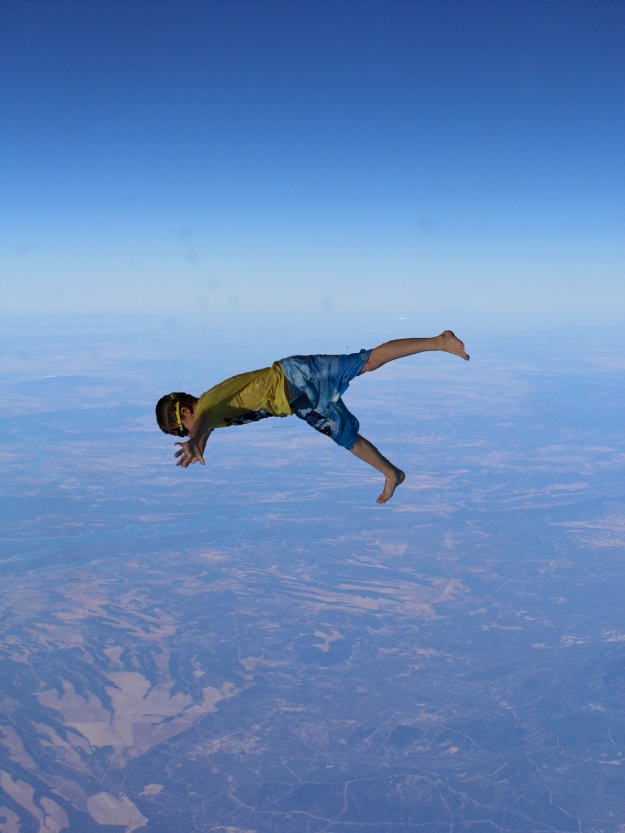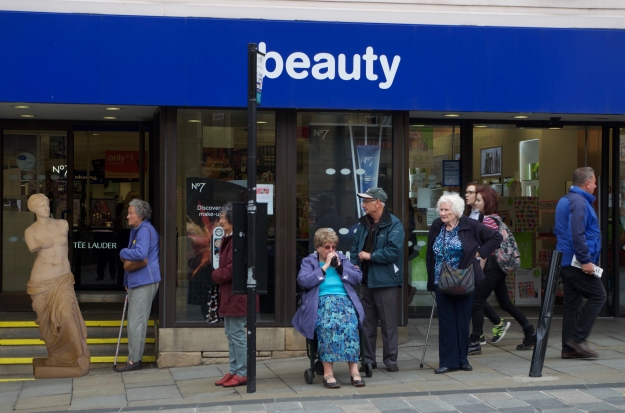Assignment 5 is about constructing a stand alone image of my own choice or constructing a series elaborating on a theme. The piece should draw upon thoughts about various forms of narrative, using myself as subject matter, telling stories and reading images.
I have looked carefully and read about the work of Cindy Sherman, Jeff Wall, Hannah Starkey, Tom Hunter, Taryn Simon, Gregory Crewdson, Adam Broomberg and Oliver Chanarin, Nicky Bird, Zoe and Cheryl Dunye, Joan Fontcuberta, and Marcel Broodthaers.
 My first thought was to make an image of an enigmatic figure at the end of a long corridor. The lighting would be controlled by noting the position of the sun at various times of day and by opening or shutting doors in the corridor. This is how it came out.
My first thought was to make an image of an enigmatic figure at the end of a long corridor. The lighting would be controlled by noting the position of the sun at various times of day and by opening or shutting doors in the corridor. This is how it came out.
I was satisfied with the lighting coming from doors leading off the corridor and the light on the figure at the end. The two pictures on the wall at the left are distracting though and add nothing to the image.
 Was the figure enigmatic enough to suggest a story? Maybe a more ghostly figure would work better. So I made this image. The distracting pictures on the left are lost in the crop but the edge of chair the ghost sits on seems too prominent. This image needs some more work in Photoshop to be successful.
Was the figure enigmatic enough to suggest a story? Maybe a more ghostly figure would work better. So I made this image. The distracting pictures on the left are lost in the crop but the edge of chair the ghost sits on seems too prominent. This image needs some more work in Photoshop to be successful.
I moved on to another idea. My tutor suggested that I read the fabricated interview with Joan Fontcuberta (1). I did and came up with the idea of constructing a kind of Harry Potter-ish image of magic gone wrong. I made this image.
However, on reading further, I found that Marcel Broodthaers had made similar images and that there are numerous recipes for this kind of thing on YouTube. I considered taking the bottle to the beach and taking a photograph of it from ground level with a blurred out figure in the background, between it and the sea, walking towards it – a different take on a message in a bottle.
This would fulfil the criteria of narrative, myself as subject matter, a suggestion of a story and an invitation to read something into the image. I may come back to this idea when I get to the beach.
 I also thought of using the same bottle being held like this. to suggest some interaction with the bottle and perhaps explain the shocked look on the face in the bottle.
I also thought of using the same bottle being held like this. to suggest some interaction with the bottle and perhaps explain the shocked look on the face in the bottle.
My next thought was not successful at all. I imagined a person praying in church. The picture would be quite dull except for a light shining into the person’s face. I would need a flash gun and a wireless trigger. I tried it out and everything went wrong.
- I forgot to turn off image stabilisation when using a tripod
- I did not judge the hyperfocal distance correctly so the figure is out of focus while the background is sharp
- the rechargeable batteries in the flash ran out very quickly
- the range of the wireless trigger is very limited
 This was my best shot but I’d be ashamed to use it. I put it here only as an illustration of the concept.
This was my best shot but I’d be ashamed to use it. I put it here only as an illustration of the concept.




 I combined a picture of the sky from an aeroplane with a picture of my grandson jumping into a pool as a first attempt at this exercise. I need to work on keeping edges soft to make a more convincing image.
I combined a picture of the sky from an aeroplane with a picture of my grandson jumping into a pool as a first attempt at this exercise. I need to work on keeping edges soft to make a more convincing image.